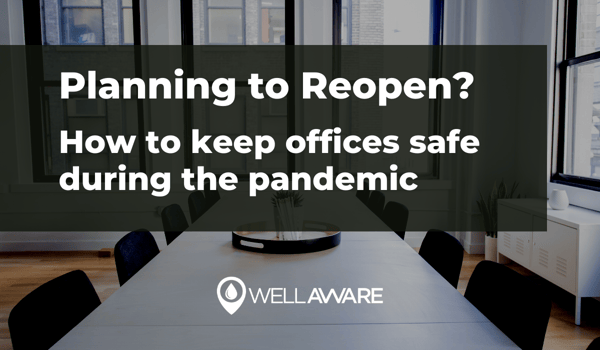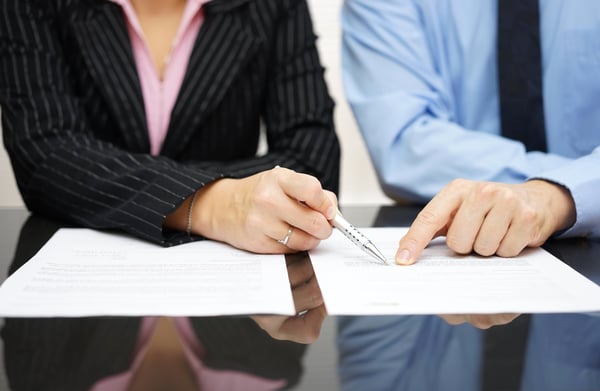
News, Insights, and more on Industrial IoT

Commercial real estate is a massive industry in the U.S. Today, there are over 50 million commercial real estate holdings across the country. In 2018, Nareit estimated that the total value of commercial properties was somewhere between $14T and $17T.
However, like many sectors, commercial real estate is suffering during the current pandemic. Many businesses are struggling to make rent payments under existing lease agreements. With more than 14 million people out of work, office spaces are likely to remain under capacity for an extended period, which means businesses will continue exploring ways to reduce their rent obligations.
On top of that, a second COVID-19 wave could lengthen the time-to-recovery for commercial real estate. As long as there is fear that going into an office carries exposure risk, people will push to stay home.
But, if commercial buildings can’t reopen and property owners continue to bleed money, we could face serious economic consequences. In the most extreme case, we may see a recession similar to what we faced in 2008. Only this time, business debt such as that related to commercial real estate holdings could drive credit defaults which lead to financial collapse.
Property owners have an important role to play in ensuring commercial real estate survives this challenging stretch. They must find a way to keep occupants safe during reopenings. Otherwise, businesses simply won’t risk sending their people back to the office.
Commercial real estate owners and investors have to consider many factors when reopening during a pandemic.
 Real estate holding companies must evaluate risks and potential violations when reopening.
Real estate holding companies must evaluate risks and potential violations when reopening.
There is financial risk in the form of increased spending to sanitize and clean common spaces properly. Custodial staff members have to closely monitor bathrooms, break rooms, meeting areas, as well as high-touch surfaces, such as elevator buttons, shared coffee pots, sinks, and faucets. Doing so requires time, money, and energy.
Secondly, there are regulatory risks to manage. Commercial property managers must comply with local, state, and federal guidelines around proper COVID-19 containment. Every jurisdiction is different, which means those with commercial real estate across numerous markets have a lot to track from a regulatory standpoint.
Thirdly, there are legal risks associated with not following regulatory mandates. Commercial property owners could face lawsuits over inter-office transmissions or related health hazards for not adequately cleaning their buildings. States are administering policies that carry fines for violations.
Each of these risk categories are related. For example, neglecting to invest in the resources to comply with government regulations could lead to occupant legal action. The publicity from a lawsuit alone right now could be detrimental in terms of preserving occupant confidence.
Unfortunately, there are no shortcuts. The only solution for property owners is to do whatever is necessary to prevent the spread of COVID-19 while it’s here.
We know now that COVID spreads more easily indoors than outdoors. While surface sanitation is crucial, it does not address the problem of airborne pathogens. Therefore, proper air filtration, recirculation, and purification are critical.
One way property owners can address this is by upgrading HVAC systems to use MERV 13/14 filters as recommended by ASHRAE. However, it can be both time consuming and expensive to upgrade air handlers, compressors, and ductwork to support these types of filters.
Another potential solution is to implement UV lights or ionizers. The challenge with these forms of air purification is that they typically can only be used during unoccupied hours, and they can also introduce additional health risks to the equation.
Air purification remote monitoring, on the other hand, is safe, cost-effective, and resource-light. Commercial property owners can use low-cost, portable air purification units to provide complete coverage throughout their facilities. Facilities managers can enable or disable air purification based on occupancy, thereby keeping costs down when possible.
Air purification units are safe for office spaces, conference rooms, board rooms, break rooms, and dining facilities where higher traffic volumes are typical. With remote monitoring of this air filtration equipment, building managers can provide assurance to occupants that their workspaces are actively purified against airborne pathogens. Additionally, building managers can use remote controls and sensors to align filtration activity with occupancy rates.
With simple mobile apps tied to these remote monitoring systems, property managers and operators can now provide their employees and occupants visibility into how well the building is doing on clean air. Each of these steps ensures that individuals will return to work with confidence.
At a time when commercial properties need to reopen, portable air purification remote monitoring is the best option for mitigating risk while protecting occupants from harmful exposures. Office managers must invest in these capabilities now to avoid bigger problems down the road as we continue to navigate our new “normal.”
Like what you're reading? Sign up for updates!
Have a Question?